Introduction to Professional Stargazing in Joshua Tree
Few experiences rival the awe of standing beneath the vast, unpolluted night skies of Joshua Tree. The park’s unique landscape sets the perfect stage for professional stargazing, offering both seasoned astronomers and curious beginners a chance to witness celestial wonders in remarkable clarity. Whether you are seeking a serene night under the stars or aiming to deepen your astronomical knowledge, Joshua Tree provides an unforgettable setting.
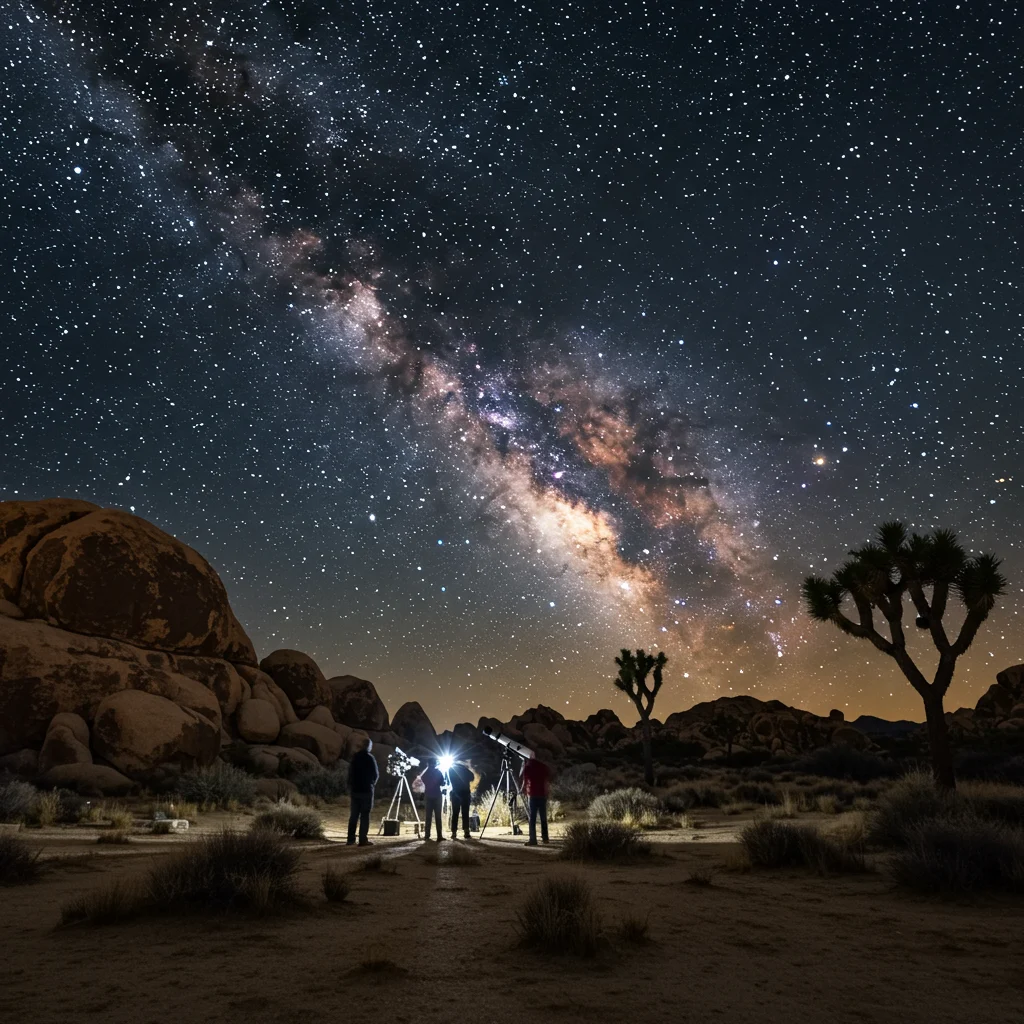
In this guide, we share expert insights on what makes Joshua Tree National Park a premier destination for stargazers and how to plan a professional-level night sky experience.
Why is Joshua Tree a World-Class Stargazing Destination?
Joshua Tree’s reputation as a stargazing haven is well deserved. Its geographical location, elevation, and commitment to preserving natural darkness combine to deliver some of the clearest nocturnal views in the United States.
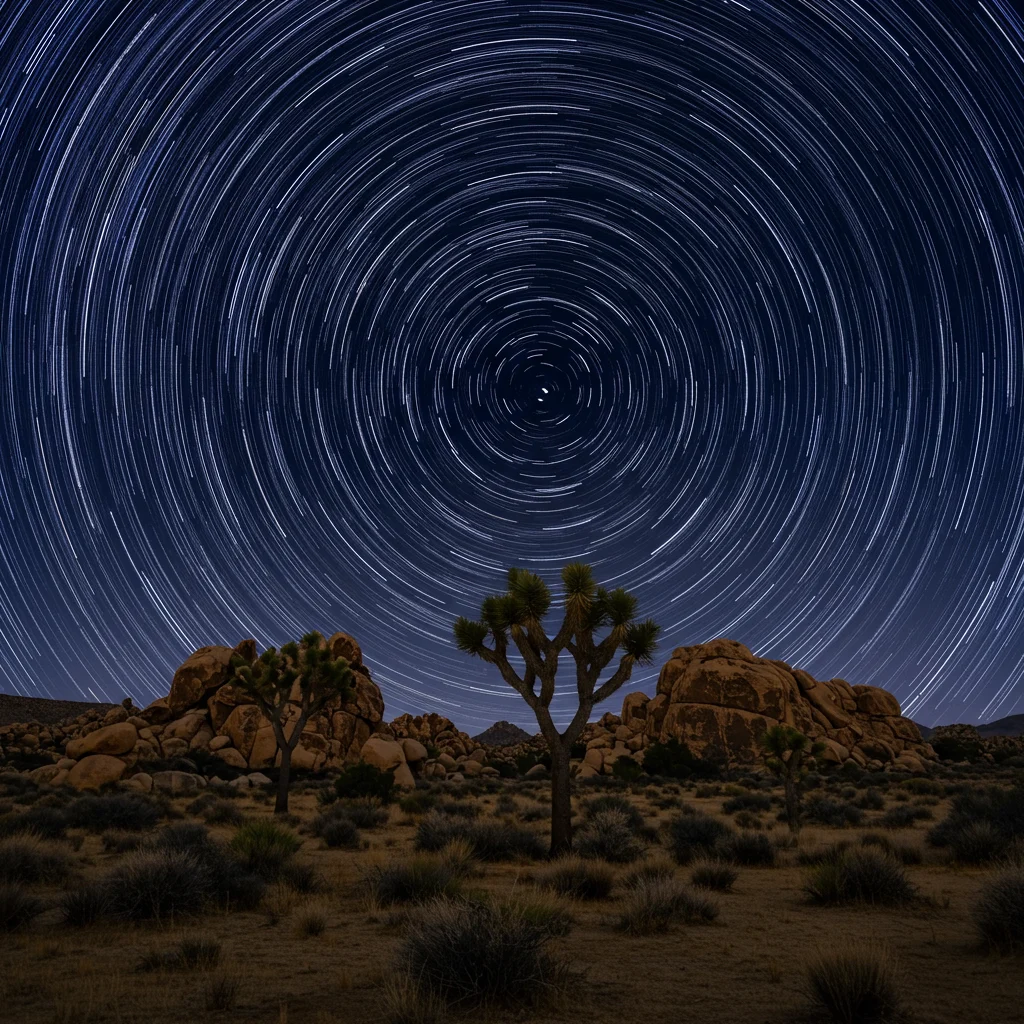
What Makes Joshua Tree’s Night Skies Unique?
The park’s high desert environment means crisp, dry air and minimal humidity, both of which reduce atmospheric distortion. With few urban centers nearby, light pollution is practically nonexistent, allowing the Milky Way and distant constellations to shine with rare intensity.
On a moonless night, visitors often remark on the sheer abundance of stars—so many that the sky appears textured and three-dimensional, with the occasional meteor streaking across the darkness.
The Role of Dark Sky Designation
Joshua Tree has earned recognition as an International Dark Sky Park. This designation is not merely honorary; it results from deliberate efforts to limit artificial lighting and educate the public about the value of natural darkness. These measures help ensure that the park remains a sanctuary for both wildlife and stargazers.
Communities surrounding Joshua Tree also participate by adopting responsible lighting policies, further safeguarding the night sky for generations to come.
Brief History of Stargazing in Joshua Tree
Stargazing has long been part of Joshua Tree’s identity. Early Native American tribes, such as the Cahuilla, used the stars for navigation and storytelling. In recent decades, astronomers and astrophotographers have flocked to the park, drawn by its ideal viewing conditions and the growing popularity of astronomy events.
Today, Joshua Tree is a gathering place for amateur astronomers, educators, and professionals who share a passion for the cosmos.
Understanding the Basics of Stargazing
Before venturing out for a night under the stars, it helps to familiarize yourself with essential stargazing concepts and terminology. Understanding the basics will enhance your experience and allow you to appreciate the night sky’s complexity.

What is Professional Stargazing?
Professional stargazing involves a thoughtful, methodical approach to observing celestial objects. It may include using advanced equipment, following astronomical calendars, and recording observations. Many enthusiasts participate in guided tours or workshops to deepen their expertise and learn from seasoned astronomers.
While professional stargazing often implies a higher level of dedication, anyone can elevate their experience with the right preparation and mindset.
Key Astronomy Terms to Know
Familiarity with basic terms can make stargazing more rewarding. Here are a few to get started:
- Constellation: A group of stars forming a recognizable pattern.
- Celestial Sphere: The imaginary sphere on which all stars appear to reside.
- Magnitude: The brightness of a celestial object.
- Zenith: The point in the sky directly overhead.
- Light Year: The distance light travels in one year.
Types of Celestial Events Visible in Joshua Tree
Joshua Tree’s skies host a wide variety of celestial phenomena, including:
- Meteor Showers such as the Perseids and Geminids
- Planetary Alignments where multiple planets appear close together
- Lunar Eclipses and occasional solar eclipses
- Seasonal appearances of the Milky Way
Visitors often note that the clarity and frequency of these events rival those found in other renowned destinations, as we observed in our comparison of stargazing experiences like the Northern Lights tours from Reykjavik.
Planning Your Stargazing Experience
Effective planning is key to a successful night of professional stargazing in Joshua Tree. Factors such as timing, weather, and light pollution all influence your ability to observe the cosmos in detail.
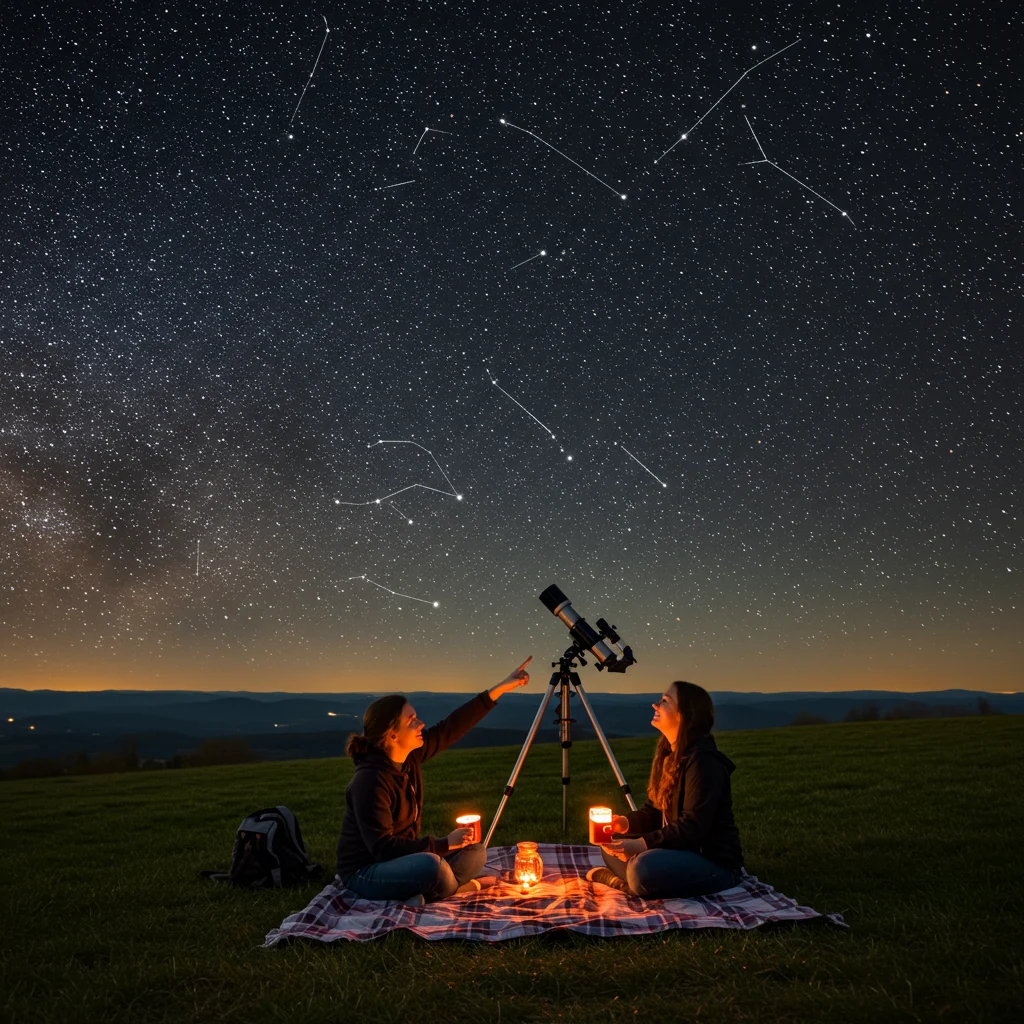
Best Times of Year for Stargazing in Joshua Tree
While Joshua Tree offers excellent stargazing year-round, the best conditions typically occur from late autumn through early spring. During these months, the air is cooler and clearer, and the nights are longer, providing more time for observation. Avoiding full moon periods can further enhance your views of faint celestial objects.
Ideal Weather Conditions for Stargazing
Clear, cloudless skies are essential for optimal stargazing. Low humidity and minimal wind reduce atmospheric interference, ensuring sharp, steady views through telescopes or binoculars. Always check local forecasts before your visit, as dust storms or high winds can occasionally impact visibility.
How to Check Light Pollution Levels
Light pollution can dramatically affect your stargazing experience. Use online tools and mobile apps to monitor current light pollution levels in and around Joshua Tree. The Bortle Scale is commonly referenced to rate sky darkness, with lower numbers indicating better conditions for astronomy.
These resources help identify the best nights and locations for your planned observations.
Top Stargazing Locations in Joshua Tree National Park
Joshua Tree National Park features numerous vantage points for observing the night sky. Each location offers a distinct atmosphere and set of advantages for stargazers.
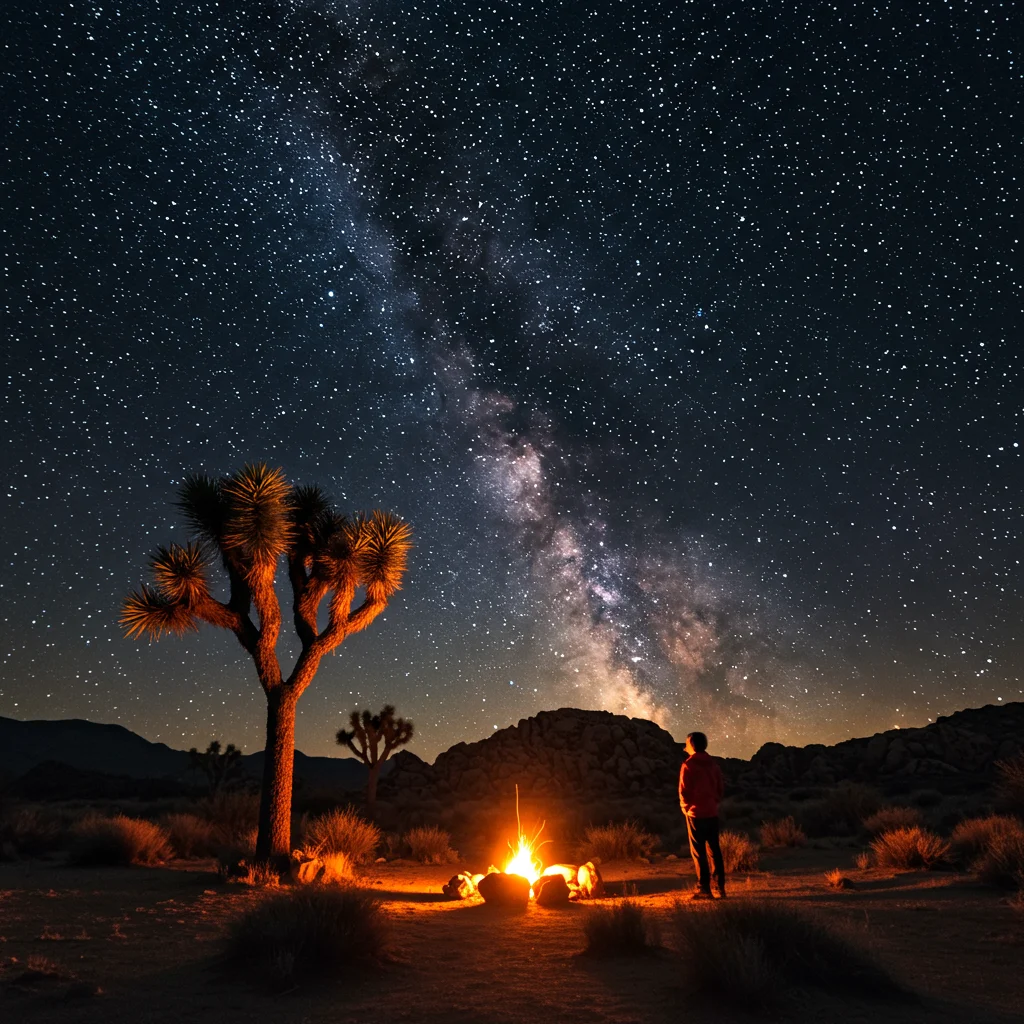
Hidden Valley
Hidden Valley is favored for its natural amphitheater-like setting, which provides shelter from wind and stray light. The surrounding rock formations add to the sense of seclusion, making it a popular choice for both individuals and groups seeking an immersive night sky experience.
Cap Rock
Cap Rock’s accessible trails and open vistas attract visitors looking for unobstructed views of the sky. The area’s unique geology and minimal light interference create a tranquil environment, ideal for both stargazing and astrophotography.
Skull Rock
Skull Rock is known for its iconic boulder formations and open spaces, allowing for panoramic sky views. It is particularly striking during meteor showers, when the contrast between the rocks and the sky heightens the visual drama.
Cottonwood Campground
Cottonwood Campground, located in the park’s southern region, offers some of the darkest skies in Joshua Tree. Its remote setting attracts dedicated astronomers seeking minimal interference and extended observation sessions.
Black Rock Campground
Black Rock Campground’s higher elevation provides cool, crisp air and excellent visibility. The site is popular among amateur astronomers and often hosts organized stargazing events.
Off-the-Beaten-Path Spots
For those seeking solitude, numerous lesser-known pullouts and trails throughout Joshua Tree offer equally stunning stargazing opportunities. These areas reward visitors with a rare sense of stillness, where only the sounds of nocturnal wildlife accompany your night under the stars.
Guided Stargazing Tours and Experiences
For those new to astronomy or looking to deepen their knowledge, guided tours offer valuable insights and access to professional-grade equipment. Experienced guides share stories, answer questions, and help visitors identify celestial objects throughout the night.
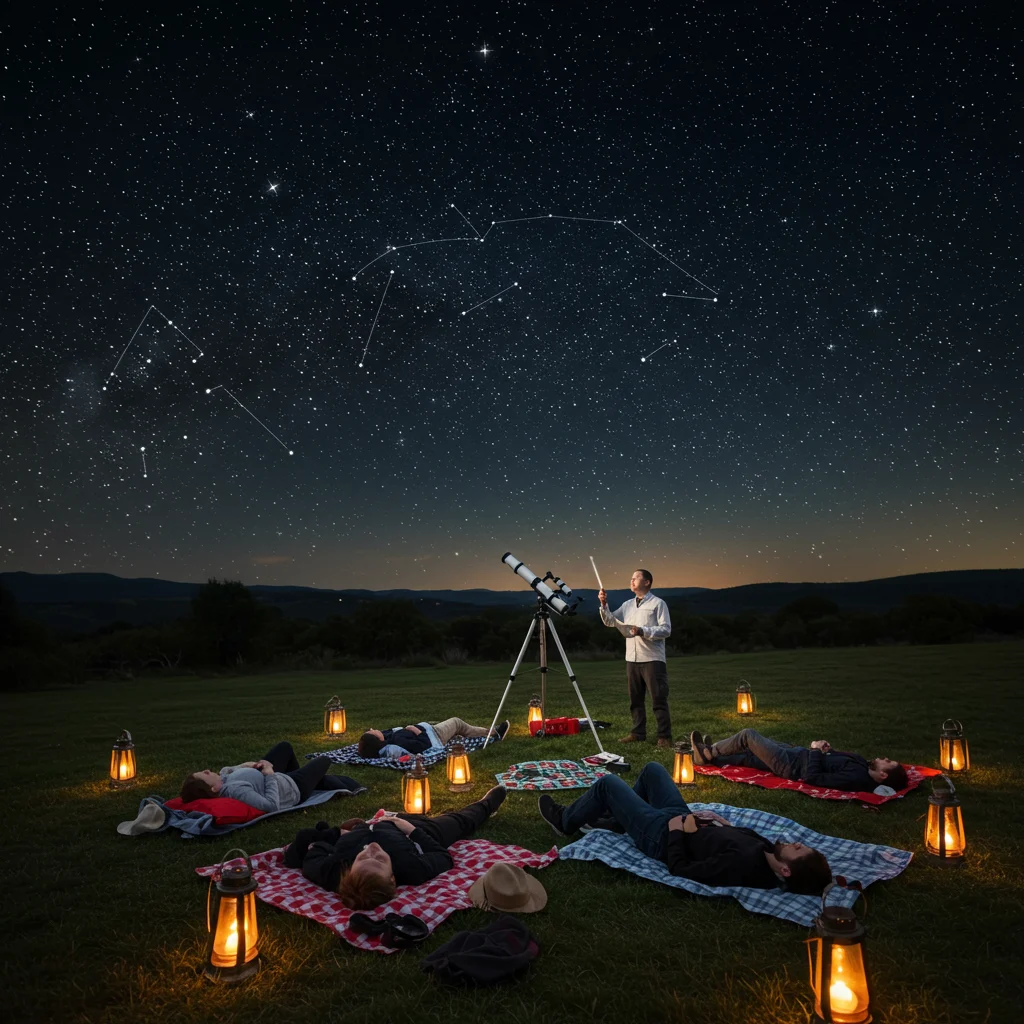
What to Expect on a Professional Stargazing Tour?
Most tours begin with an overview of the evening’s celestial highlights, followed by hands-on telescope viewing and interactive discussions. Guides often point out constellations, planets, and notable deep-sky objects, tailoring the experience to the interests and skill levels of participants.
As experts often say:
“The night sky is a map of our place in the universe. Every star you see is a story waiting to be told.”
Many tours also provide equipment such as telescopes and binoculars, sparing you the need to bring your own.
Top Stargazing Tour Companies in Joshua Tree
Several reputable companies operate in Joshua Tree, each offering a unique approach to professional stargazing. Some specialize in small-group sessions, while others cater to families or private parties. Look for companies with certified astronomy guides and a strong commitment to sustainable practices.
How to Choose the Right Stargazing Experience
Selecting the ideal tour depends on your interests, group size, and desired level of instruction. Consider whether you prefer a more intimate, personalized experience or the camaraderie of a larger group.
Private vs Group Stargazing Tours
Private tours offer flexibility and individualized attention, making them ideal for serious enthusiasts or those celebrating special occasions. Group tours foster a sense of community and often include educational components suitable for all ages.
Family-Friendly Stargazing Experiences
Many tour operators design their programs with families in mind, incorporating interactive games and storytelling to engage younger participants. These experiences spark curiosity and create lasting memories for children and adults alike.
Astrophotography Workshops and Night Sky Photography
Astrophotography has become an integral part of the Joshua Tree stargazing experience. Workshops led by professional photographers teach visitors how to capture the night sky’s beauty in vivid detail.

Tips for Capturing the Night Sky
Achieving stunning night sky photographs requires patience, practice, and the right techniques. Use a sturdy tripod, set your camera to manual mode, and experiment with long exposures to reveal faint stars and celestial features.
Workshops often guide participants through these steps, helping them master the art of astrophotography in a supportive environment. For those interested in unique perspectives, we suggest reading about the breathtaking views from the Auckland Sky Tower for inspiration on capturing city and sky together.
Best Equipment for Astrophotography in Joshua Tree
The right gear can make all the difference when photographing the night sky. At minimum, you’ll need a DSLR or mirrorless camera, a wide-angle lens with a large aperture, and a remote shutter release to minimize vibrations.
Recommended Camera Settings for Beginners
Start with a low ISO (800–1600), a wide-open aperture (f/2.8 or wider), and exposure times between 15–30 seconds. Adjust as needed based on your camera’s capabilities and the ambient light conditions.
Editing and Post-Processing Your Night Sky Photos
Post-processing brings out the subtle colors and details of your night sky images. Use photo editing software to adjust contrast, reduce noise, and enhance star clarity. Many workshops include tutorials on these techniques to help you achieve professional results.
Essential Gear for Professional Stargazing
Proper equipment ensures comfort and success during your stargazing adventure. In addition to telescopes and binoculars, consider bringing star charts, astronomy apps, and practical items for safety and convenience.

Telescopes: How to Choose the Right One
Selecting a telescope involves balancing portability, ease of use, and optical power. Dobsonian telescopes are popular for their simplicity and wide field of view, while refractors offer crisp images of planets and stars. Consider your skill level and intended targets when making your choice.
Binoculars for Stargazing
Binoculars are an excellent option for beginners and travelers. They provide a wide view of the sky and are lightweight, making them easy to use for extended periods. Look for models with a large objective lens (at least 50mm) and moderate magnification (7x–10x).
Star Charts and Astronomy Apps
Printed star charts and digital apps help you navigate the sky and identify celestial objects in real time. Many apps offer augmented reality features, turning your smartphone into a powerful observational tool.
Comfort and Safety Essentials
Comfort is crucial for extended observation sessions. Bring a reclining chair or blanket, snacks, and plenty of water. Dress in layers to adapt to changing temperatures, as desert nights can become surprisingly cold.
Red Flashlights and Night Vision
Red LED flashlights preserve your night vision, allowing you to consult charts or equipment without interfering with your eyes’ adjustment to the dark. Avoid using white lights, which can disrupt both your experience and that of others nearby.
Warm Clothing and Camping Gear
Even in warmer months, nighttime temperatures in Joshua Tree can drop sharply. Pack insulated jackets, hats, and gloves. If camping, choose a high-quality sleeping bag rated for desert conditions.
Safety Tips for Nighttime Exploration
Safety is a top priority during any nighttime visit to Joshua Tree. With proper preparation and awareness, you can enjoy the wonders of the night sky without unnecessary risks.
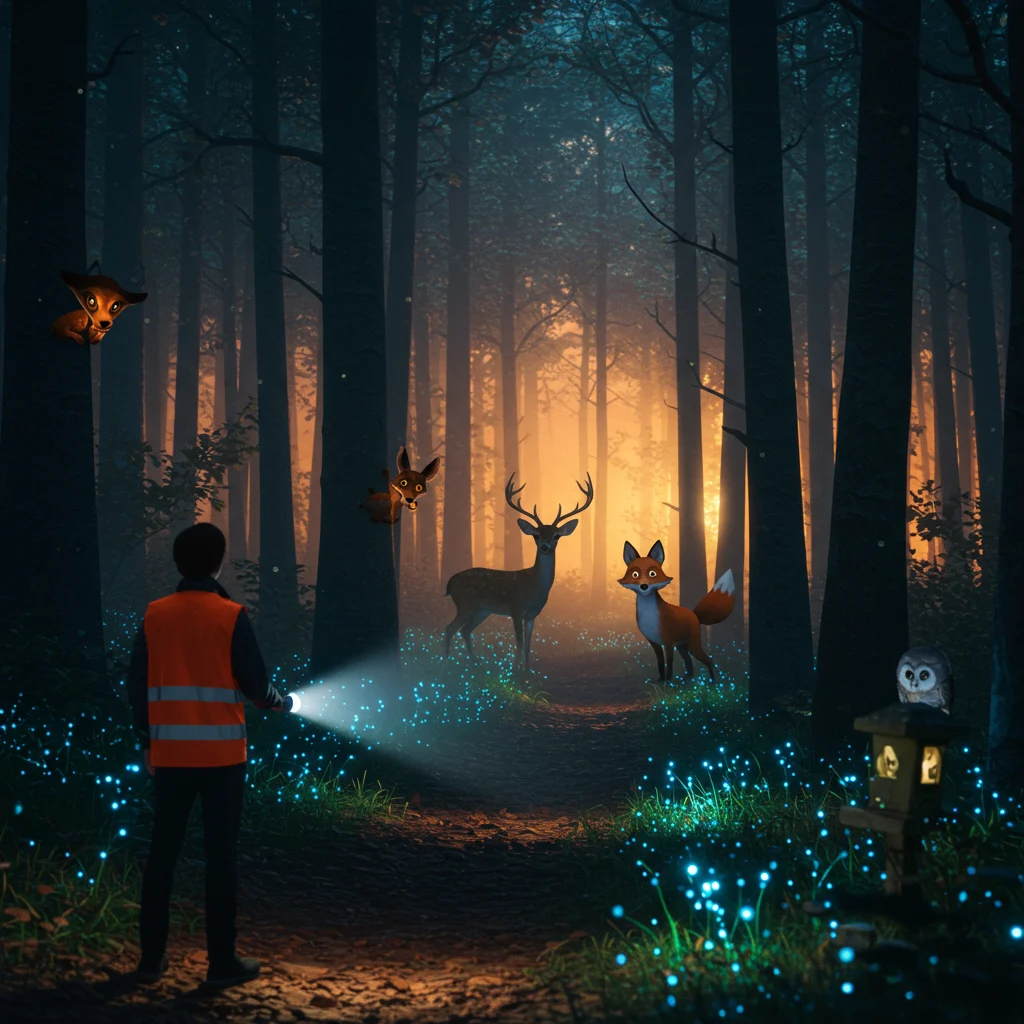
How to Navigate Joshua Tree Safely After Dark
Familiarize yourself with trails and landmarks during daylight hours. Bring a reliable map, GPS device, and extra batteries. Always let someone know your itinerary and expected return time.
Wildlife Awareness at Night
Joshua Tree is home to nocturnal animals such as coyotes, owls, and jackrabbits. Observe wildlife from a respectful distance and avoid leaving food out, as it can attract unwanted visitors. Remain alert and avoid wandering off established paths.
Staying Hydrated and Prepared
Desert environments can quickly lead to dehydration, even at night. Carry ample water and snacks, and monitor your energy levels throughout your stargazing session. Consider packing a small first aid kit for minor emergencies.
For those interested in multi-day adventures that prioritize both safety and exploration, our review of the Acadia National Park and Boston 3-Day Tour offers helpful travel tips.
Etiquette for Stargazers in Joshua Tree
Observing proper etiquette helps protect the park and ensures a positive experience for all visitors. Respect for the environment and fellow stargazers is essential.

Leave No Trace Principles
Pack out everything you bring, including food wrappers and personal items. Avoid disturbing natural features and wildlife, and stick to established trails and campsites whenever possible.
Respecting Fellow Stargazers
Keep noise to a minimum and avoid shining lights toward others. Many visitors come to Joshua Tree seeking peace and a connection to the night sky. A considerate approach ensures everyone can enjoy the experience.
Minimizing Light and Noise Pollution
Use red lights and shielded equipment to reduce light pollution. Speak softly and avoid playing music or making loud noises, as these can disrupt the tranquil atmosphere that makes Joshua Tree so special.
Celestial Events Not to Miss in Joshua Tree
Joshua Tree’s skies come alive during certain annual celestial events. Planning your visit around these highlights can make your stargazing adventure even more memorable.
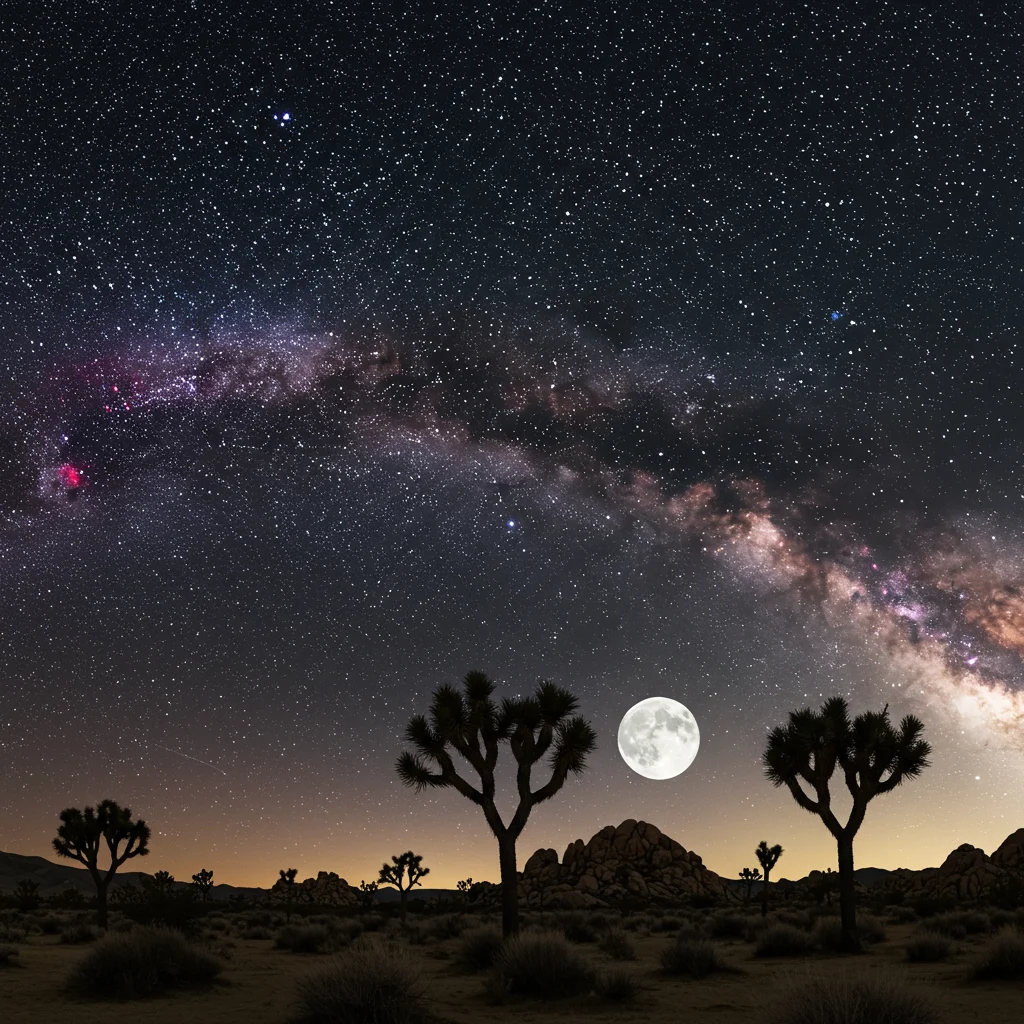
Annual Meteor Showers
The Perseids in August and Geminids in December are particularly spectacular, with dozens of meteors visible per hour under optimal conditions. Other notable showers include the Quadrantids and Leonids.
Planetary Alignments and Eclipses
Keep an eye on astronomical calendars for planetary conjunctions and lunar or solar eclipses. These events offer rare opportunities to observe multiple planets or dramatic changes in the moon’s appearance.
Those who appreciate rare celestial displays might also enjoy reading about the impressive auroras seen on the Iceland South Coast tour.
Milky Way Viewing Season
From late spring to early autumn, the Milky Way’s core is prominently visible in Joshua Tree. The dense, glowing band of stars is a favorite subject for both observers and astrophotographers.
Star Parties and Astronomy Events
Joshua Tree regularly hosts public events that bring together astronomy enthusiasts of all ages. These gatherings provide access to expert guidance, shared equipment, and a sense of community.
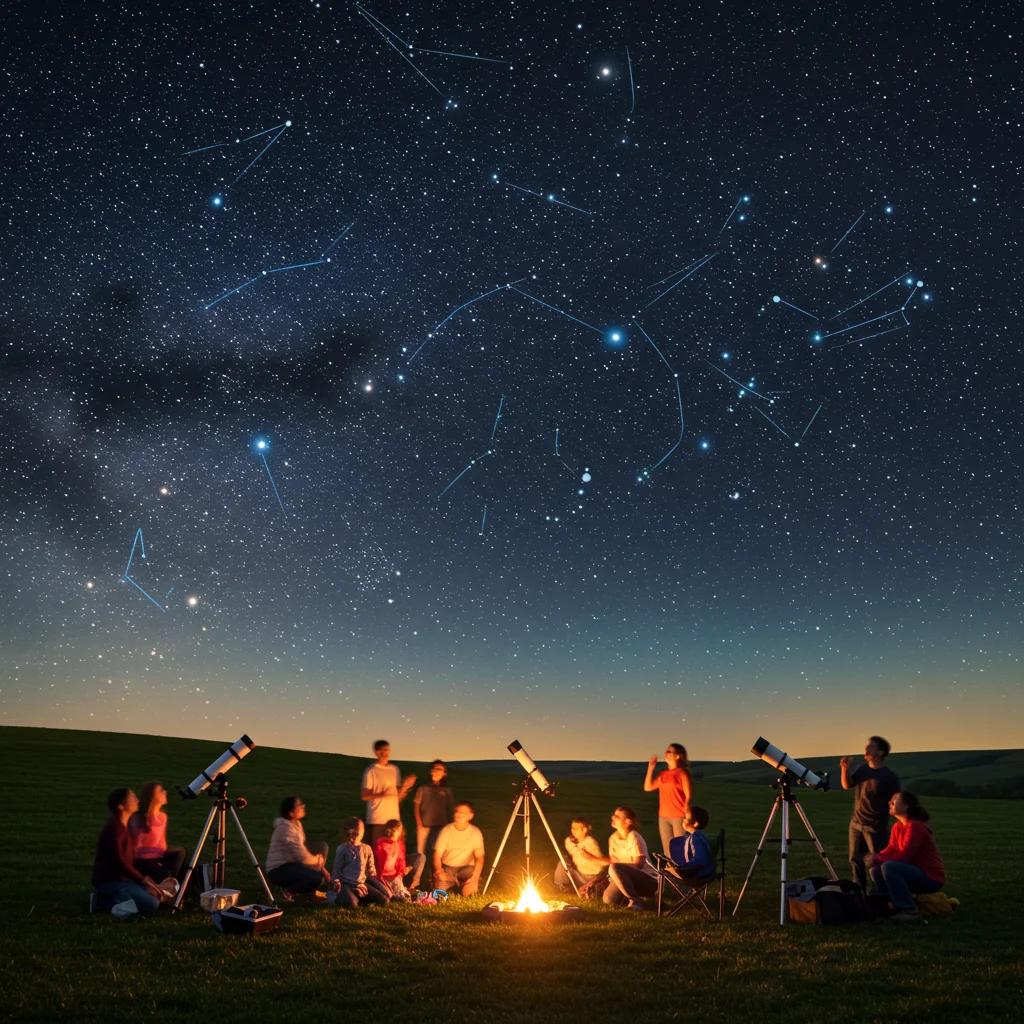
Joshua Tree Night Sky Festival
Held annually, the Night Sky Festival features guided telescope viewing, educational talks, and workshops on topics ranging from cosmology to astrophotography. The event attracts visitors from across the country and is suitable for all skill levels.
Local Astronomy Club Meetups
Regional astronomy clubs frequently organize stargazing nights within the park. These informal gatherings are a great way to meet like-minded individuals and learn from experienced observers.
Workshops and Educational Programs
Throughout the year, Joshua Tree offers a variety of workshops and educational programs. Topics include telescope operation, constellation identification, and the science behind celestial events.
Stargazing with Kids: Tips for Families
Stargazing is a magical experience for children, sparking curiosity and a lifelong love of science. With a few simple strategies, families can keep young astronomers engaged and entertained.

Keeping Children Engaged During Stargazing
Bring along binoculars, fun star charts, and interactive apps designed for kids. Short observation sessions with frequent breaks help maintain interest and prevent fatigue.
Educational Activities for Young Astronomers
Organize simple games like “find the constellation” or storytelling sessions inspired by the stars. Many guided tours include hands-on activities and trivia to keep children involved.
For additional inspiration on family-friendly adventures, consider our review of the Banff Gondola Ride and its appeal to visitors of all ages.
Accessibility: Can Everyone Enjoy Stargazing in Joshua Tree?
Joshua Tree is committed to making stargazing accessible to all visitors, regardless of mobility or physical ability. Many popular viewpoints and campsites are designed with accessibility in mind.
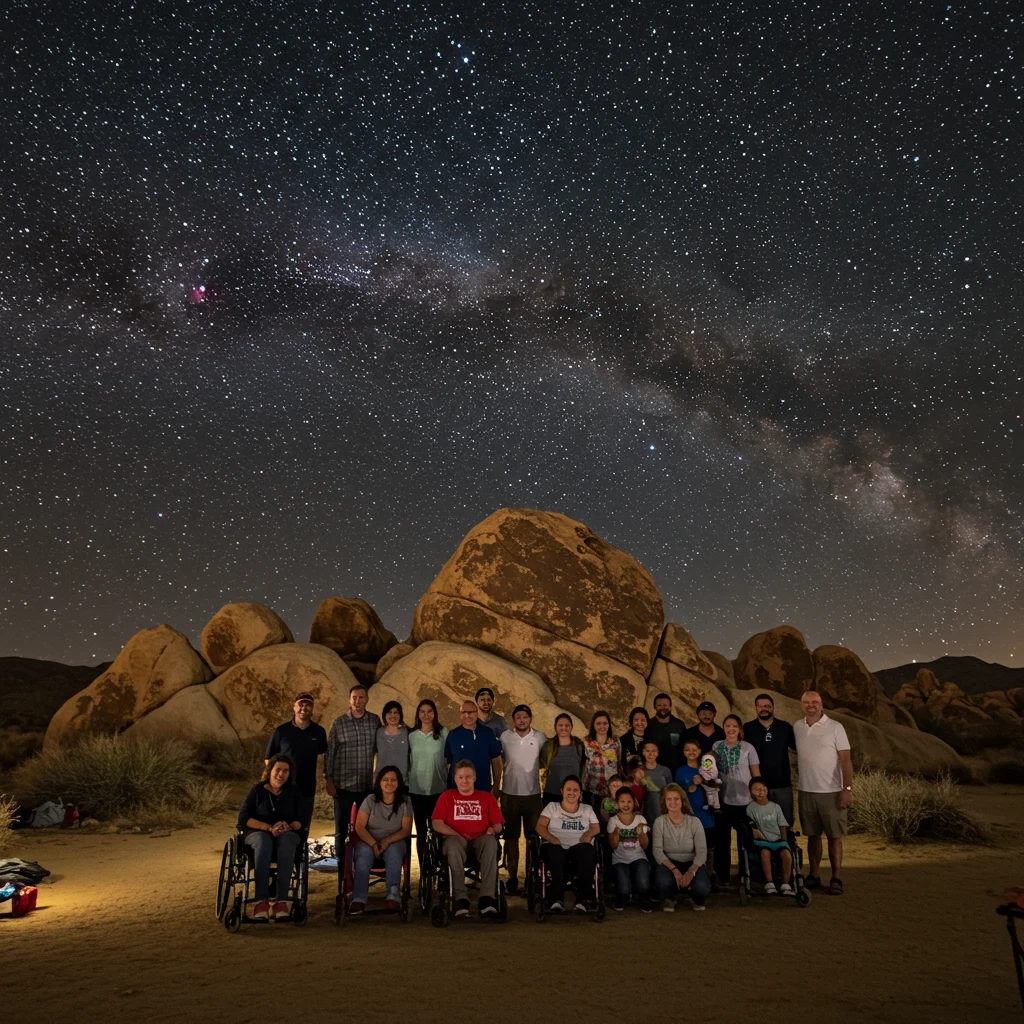
Accessible Stargazing Locations
Several stargazing areas feature paved paths, accessible restrooms, and designated parking. Hidden Valley and Cap Rock both offer accessible vantage points with excellent sky views.
Resources for Visitors with Disabilities
The National Park Service provides detailed accessibility guides for Joshua Tree. Many guided tours and workshops offer accommodations for guests with special needs, ensuring everyone can participate fully in the stargazing experience.
Where to Stay for the Ultimate Stargazing Experience
Choosing the right accommodation enhances your time in Joshua Tree, offering comfort and convenience after a night spent under the stars.

Camping in Joshua Tree National Park
Camping inside the park places you steps away from prime stargazing locations. Popular campgrounds like Cottonwood and Black Rock provide dark skies and a sense of immersion in nature.
Unique Accommodations: Glamping and Stargazing Domes
For a blend of comfort and adventure, consider glamping sites or stargazing domes located near the park. These accommodations often include amenities such as private decks, fire pits, and panoramic sky views.
Nearby Hotels and Lodges
A range of hotels and lodges in the Joshua Tree area cater to different budgets and preferences. Many offer late check-ins and stargazer-friendly amenities, such as outdoor seating and telescope rentals.
Local Dining and Late-Night Eats
A satisfying meal can round out your stargazing adventure. Joshua Tree and nearby towns offer a variety of dining options, many of which stay open late to accommodate visitors.
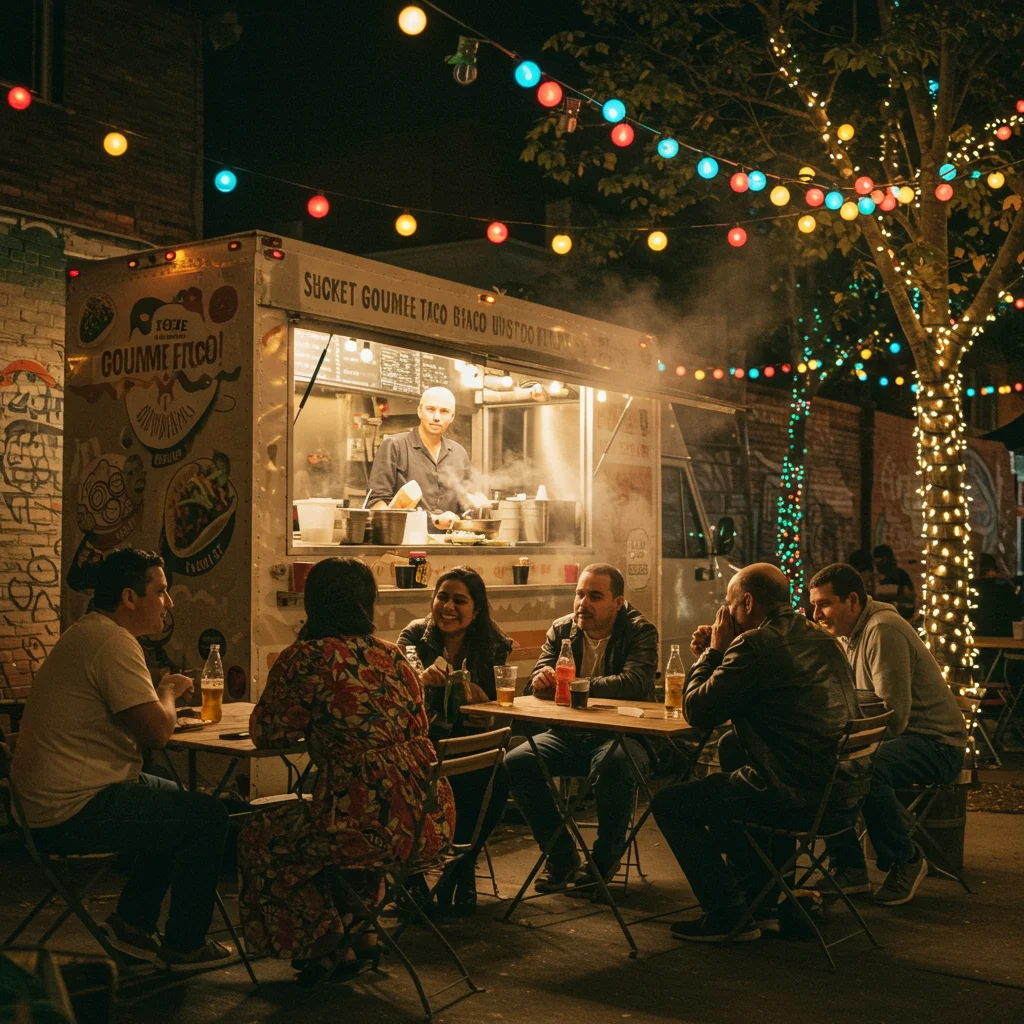
Best Restaurants Open Late
Several local eateries serve hearty fare well into the evening, including diners, pizzerias, and casual cafes. Check current hours before your visit, as some locations may vary seasonally.
Picnic Ideas for Stargazers
Pack a picnic with easy-to-eat foods, like sandwiches, fruit, and snacks. Insulated containers help keep beverages hot or cold, and reusable utensils reduce waste. Enjoying a meal under the stars adds to the sense of occasion.
Contributing to Joshua Tree’s Dark Sky Preservation
Protecting Joshua Tree’s dark skies is a shared responsibility. Visitors play a crucial role in ensuring future generations can enjoy the same pristine night views.

How Can Visitors Help Protect the Night Sky?
Use only necessary lighting, choose red LEDs, and shield all lights to minimize skyglow. Support local businesses and organizations that advocate for responsible lighting practices.
Local Initiatives and Volunteer Opportunities
Volunteer programs and educational initiatives encourage community involvement in night sky preservation. Participate in cleanup events, attend informational sessions, or donate to organizations committed to conservation efforts.
Stargazing Beyond Joshua Tree: Other Dark Sky Parks in California
While Joshua Tree stands out for its clarity and accessibility, California boasts several other dark sky parks worth visiting. Each offers a distinct landscape and set of celestial highlights.

Comparing Joshua Tree to Other Stargazing Destinations
Parks such as Death Valley and Anza-Borrego Desert State Park offer similarly dark skies and unique geological features. Each destination presents its own challenges and rewards, allowing stargazers to broaden their horizons and deepen their appreciation for the night sky.
Frequently Asked Questions about Stargazing in Joshua Tree
We address some of the most common questions to help you plan your professional stargazing adventure with confidence.
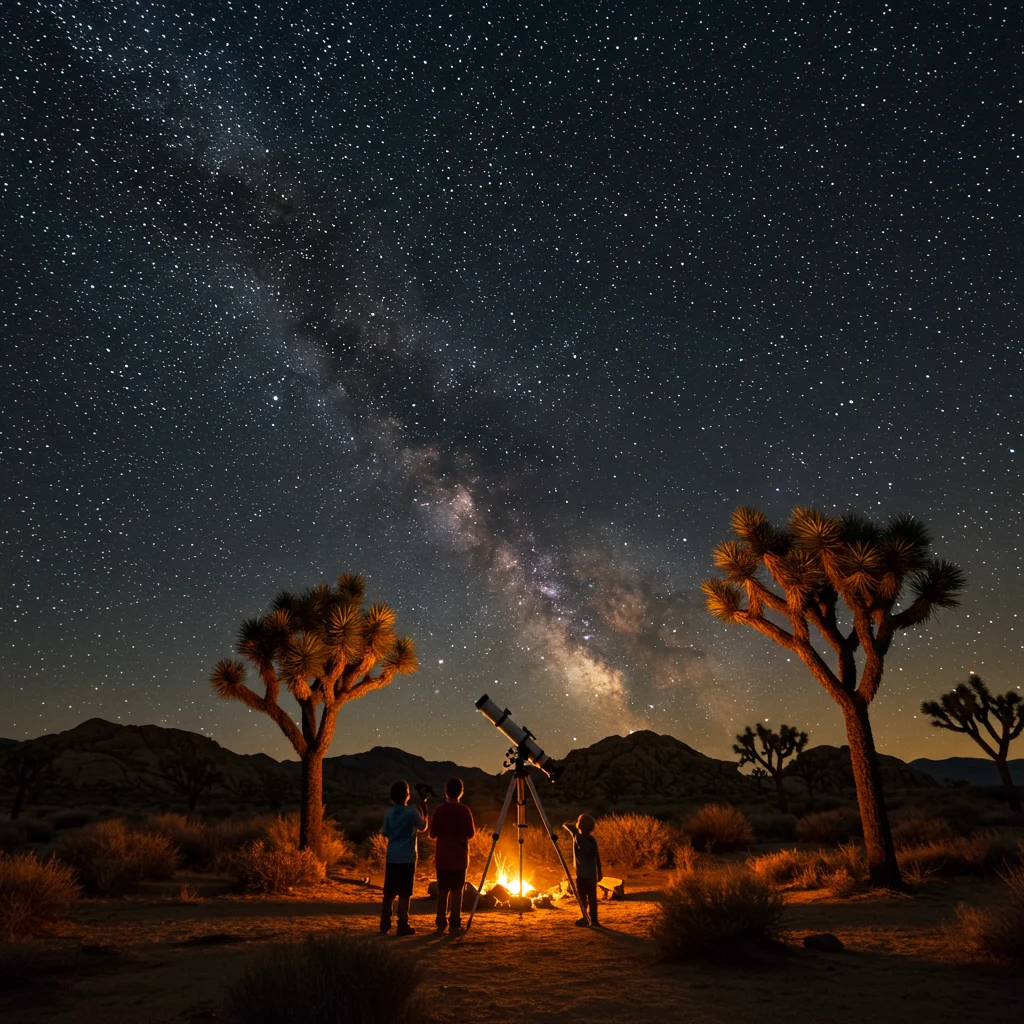
Is a Permit Required for Night Visits?
No special permit is required for nighttime entry to Joshua Tree National Park, but standard entrance fees apply. Some organized events or overnight stays may require advance reservations or permits—check the park’s official website for current information.
What Should I Do If I Get Lost at Night?
Stay calm, remain in place, and use your flashlight or phone to signal for help if needed. Conserve your phone’s battery and avoid wandering, as moving in the dark can increase your risk of injury. Rangers patrol the park and can assist in emergencies—carry a whistle or other signaling device for added safety.
Summary: Planning Your Professional Stargazing Adventure
A professional stargazing trip to Joshua Tree requires thoughtful preparation, respect for the environment, and a sense of wonder. By choosing the right location, bringing appropriate gear, and following established etiquette, you can experience the night sky at its most breathtaking.

Final Tips for an Unforgettable Night Under the Stars
As you prepare for your journey, remember that every clear night in Joshua Tree offers something new to observe. Whether you are a seasoned astronomer or a first-time visitor, the park’s dark skies invite you to connect with the universe in profound ways. For more expert travel inspiration and curated experiences, visit Tourlik—your trusted resource for unforgettable adventures beneath the stars.


